 Katie, Caroline and Mary. Daughter, Mother and Grandmother. Three generations of women all grappling with their own problems find their lives are more infinitely linked than they ever thought possible. I was initially surprised when I started reading this voluminous young adult novel, to find it kicking-off with the story of an old lady with dementia (Mary) and in fact the second chapter is told in Mary’s voice as she struggles to decipher where she is and who is taking care of her. Is this what teenagers are wanting to read? Yes. It should be. This novel deals eloquently with loss in its many forms. Mary has lost her loving husband and her understanding of time and history is slipping through her fingers. Caroline has lost her own husband to a younger woman, and the ghosts of her Mother's taboo pregnancy haunt her. Trying to piece together the fragments in between is Katie; all while juggling the stress of exams under Caroline’s strict gaze, looking after Mary and also her little brother who has special needs. Not to mention she has just kissed her best friend, Esme, and as a result no longer has any friends at school. We come to see how fragile the relationships between several generations are. Everyone who supports needs to be supported in some way themselves and this book captures that beautifully. The author skilfully navigates the murky waters of Mary’s mind, the fear in Caroline and the blossoming curiosity, sexuality and ‘fire’ in young Katie as she discovers who she is and more importantly, who she wants to be. We clearly see the burdens felt by those who are ageing and relying on their families; the tired parent who is struggling under the weight of emotional stresses whilst trying to do their very best for their children; and the child whose world is only beginning to extend beyond that of their own four walls, social bubble and school, in turn struggling to support their parent. The characters are vivid and alive in this story: Mary’s passion for life and having a bit of fun; Caroline’s drained emotional state, raw at the sudden appearance of her estranged mother; and the tangible electricity between Katie and her new acquaintance Simona, all keep the pages turning at a brisk pace. Katie gently navigates her way through the lack of understanding and memory of what happened between Caroline and Mary all those years ago, by encouraging Mary to look into her past, finally getting them to sit face-to-face and hash it out in the final pages. As for Katie, she finds both resolution and new beginnings. Published by David Fickling Books @DFB_storyhouse @jenny_downham
0 Comments
Be it from the perspective of a bookseller or a publisher - the prospect of an annual wave of fresh talent from the Edinburgh College of Art is always a tantalising one. Every year I visit the degree shows to check out the fresh meat - and I am never disappointed. I first discovered Eilidh Muldoon's work at her MFA degree show in 2013, where she showcased her imaginative collection of paper cut-outs, prints and patterns of characters and buildings from Grimm's Fairy Tales. My attention was caught by the perfect balance struck between the traditional tales and the modern expression of them. Two years on and Eilidh is celebrating the publication of her new colouring book, 'An Art Adventure: Around the National Galleries of Scotland'. I caught up with her to hear all about it!  An Art Adventure: Around the national galleries of Scotland, published by National Galleries Scotland, 2015 An Art Adventure: Around the national galleries of Scotland, published by National Galleries Scotland, 2015 Hi Eilidh, welcome to the Wee Red Writer blog! How are you this fine day? Very well thank you. I'm in my cosy studio after a chilly wintery walk, and planning to spend the day working on some really nice projects. A Huge congratulations on the publication of your first colouring book! It's a feast for the eye... Thank you. I am so pleased to finally have my hands on a copy. And yes, I have started to colour it in! Understandable! Your surface pattern design work clearly informed this book - can you tell us about the commission process? Did you know from the beginning it would be so intricate or did that grow organically? I knew I would get really stuck into the detail. Much of my work is intricate and characterised by delicate lines. During discussion with the gallery about the style of the book we talked about simplifying it for a younger audience. We tested out samples with visitors to the gallery and found that even very wee ones enjoyed colouring and adding to the detailed images. So we decided to keep the more intricate line work, but to mix it up with some larger areas of white space. I’m really pleased with the balance. How did the process compare to illustrating the picture book, 'Never Bite a Tiger on the Nose' written by Lynn Rickards? They were both lovely projects to work on but very different to one another. 'Never Bite a Tiger on the Nose' was my first go at illustrating a full colour picture book, and I was lucky enough to work with a great writer and art director who taught me a lot. I experimented with a variety of materials and methods to create colourful and appealing characters. In contrast, ‘An Art Adventure’ has allowed me to return to creating fine, intricate linework. Do you prefer working in black and white or in colour? That’s a hard question to answer! Both have their rewards and obstacles. Can I say both equally?! I found my comfort zone in black and white illustration, but now that I have developed my linework I am enjoying experimenting with colour again. I hope to create a full colour book in this more detailed style. Sounds brilliant! Your work is so varied - what do you enjoy about working with the different colour palettes? I am naturally drawn to quite muted and limited colour palettes. Without intending to I seem to have created a rather blue and yellow portfolio! There are some bursts of brighter colours in there as a result of commissioned work for book jackets, packaging and posters that have specified use of ‘punchier’ colours. I quite like working to briefs that might take me out of my comfort zone, as it keeps me on my toes. I can end up creating something unexpected that feels fresh. Can you tell us three golden rules you learned at Art College? Draw, draw and draw! I know that’s only one, but it is so important. I remember being told to ‘draw like no one is watching’, which sounds cheesy but it is true. If you draw to learn rather than impress then you will never find a reason to stop. Even if it feels like a sketch isn’t going well, I keep at it because I might look back on it later and see things in it that will inform future work. I had better give you two more… experiment with as many different materials and processes as you can, you will wish you had taken the chance once you are out of the college environment and it is harder to access facilities. And always clean your paint brushes! Valuable advice! When did you know you wanted to be an illustrator? I remember saying I wanted to be an artist from a very young age, and I can’t remember ever wanting to do anything else. I studied History of Art as my undergraduate degree, but would spend my spare time making images in response to stories and to my surroundings. I don’t know why it took me so long but one day I decided I wanted to do that for ever, and so I applied to Edinburgh College of Art to study a Masters in Illustration. They let me in and I haven’t looked back! We're so glad they did! Who is your favourite illustrator and who inspired you growing up? Another tricky question! I have a lot of favourites. I have always loved Janet Ahlberg’s illustrations – 'The Jolly Postman' is my favourite book of all time, when I was wee I used to make books with fold out pages and letters from the characters in the stories. Anthony Browne is one of my illustration heroes. His images are so sophisticated and communicative. Whether joyful, serene or melancholy they never patronise the audience. I have great respect for children’s books that acknowledge children as intelligent and discerning. I sometimes see books published that don’t seem to take into account that children are a tough audience to please and not easily fooled! Very true! Can we have a peek at your studio? What do you like about the space you work in? It is teeny tiny but I love it. I’m very lucky to have a space in my flat that I can use solely for working. The only downside is the lack of an external window, so I can feel a little isolated at times. However, it has an internal window so I get natural light coming in and it is very peaceful. Peaceful workplace = peaceful thoughts. So what are your favourite books this year?! (It's a tough one!) So many. Deep breath… The Little Gardener and Wild, both by Emily Hughes; Oliver and Patch written by Claire Freedman and illustrated by Kate Hindley; Shh! We Have a Plan by Chris Haughton; Yasmeen Ismail’s I’m a Girl; The Marvellous Fluffy Squishy Itty Bitty by Beatrice Alemagna, Smelly Louie by Catherine Rayner. I’m also a huge fan of Emily Sutton, especially her ‘Clara Button’ books and she has a new non-fiction one out written by Nicola Davies which is a delight. I also love Jon Klassen’s Sam and Dave Dig a Hole. I could go on… That's a great list! So what are the most enjoyable things about your job? Is there anything you could do without? Drawing pictures and calling it ‘work’ is pretty cool. I have met some wonderful people – illustrators and other creative people working in the publishing industry – who have been very supportive and encouraging. Building a network of colleagues despite working in relative isolation most of the time has been a nice surprise. Taking on a wide variety of design and illustration commissions is fun because it brings me into contact with different people and allows me to try out techniques that I might not have come across otherwise. This sits nicely alongside the time I spend working on my own projects and books. I teach part time at Edinburgh College of Art, it is extremely rewarding and inspiring to work with illustration students. So what could I do without? The admin. Maths is hard and spreadsheets are a tedious necessity! Hear hear! And finally... the three tools you just can't live without? My ‘Rotring’ fineliner cartridge pens (especially the 0.3 nib) and my scanner are essential. It’s not really a tool but I also always need a good podcast to listen to! Great tip! Big thanks to Eilidh for joining us on Wee Red Writer. An Art Adventure: Around The National Galleries of Scotland is out now and you can find out more about Eilidh on her blog and follow her on Twitter. *Competition* There's a copy of An Art Adventure up for grabs for one lucky reader - all you have to do is share your best childhood book story in the comments below - the best story wins! Competition closes on Friday 27th and any stories submitted after that date will not be considered.  Felicita Sala's rich, textured illustrations bring the story to life Felicita Sala's rich, textured illustrations bring the story to life Every so often, a real gem comes along and tugs on my heartstrings. Michael Morpurgo's My Father is a Polar Bear is one of them. Newly released in picture book format by Walker Books, with illustrations by Felicita Sala, this captivating story was originally published in a collection of short stories, From Hereabout Hill, in 2000. A masterful storyteller, Morpurgo skillfully draws from his own childhood experience in his telling the story of two little boys, Andrew and Terry, as they attempt to find their biological father. From the very first line 'Tracking down a polar bear shouldn't be that difficult', we are acutely aware that we are inside the head of a young child in pursuit of an elusive father figure. Admirably, Morpurgo doesn't tiptoe around this as we so often find with 'sensitive' issues in children's books. He very deliberately dives in head-first. Two pages in, he gives us the story of the boys' parents' relationship, from the point of view of Andrew looking back from his adulthood, 'Some background might be useful here. I was born, I later found out...'. His use of the first person, past-tense narrative, allows us to dive in to memories from Andrew's childhood in real-time but to also appreciate that we are looking back from some future point. Andrew tells us how his 'real' father is never talked about by his mother or step-father. All they know is that they were given his name; Van Diemen. Andrew and Terry are forced to discuss him in the secret hours of the night. On one such occasion, Terry produces a magazine with a photo from a theatre production of 'The Snow Queen', on one of it's spreads. A polar bear poised with arms reaching out sprawls over the pages; the caption below revealing the actor under the suit to be none other than their missing father, Peter Van Diemen. Throughout the story, their father is referred to by them as 'the polar bear father', reflecting the impact of this first discovery. It's the use of time in this story that I found to be particularly affecting. Time, as we know, slips from our fingers all too readily. The story starts in 1948, with references to shillings and the second world war, when Andrew is 5 years old. It's at this stage that Morpurgo reveals the approach the family takes to the boys father: 'My first father, my real father, my missing father, became a taboo-person, a big hush-hush taboo person that no one ever mentioned, except for Terry and Me.' The years roll on and we see a brief glimpse of the boys father on the television some fourteen years later- to which his mother shouts out in surprise, confirming his identity. The boys approach her for more information soon after, but her reluctance to entertain her past is too powerful, as is so often the case when we want to move on. We can all too easily forget the consequences for those around us, as this story powerfully conveys. Morpurgo expresses the deep-felt sense of a partial identity, with true craft, in the closing pages. The boys, now adults with their own families, finally go to see their father. 'There was a lot of hugging in the dressing room that night, not enough to make up for all those missing years, maybe. But it was a start'. The very idea that there can be a start so much closer to the end is highly telling. This was always the beginning for the boys - the beginning of their history - and their identity. Morpurgo's own feelings are perfectly executed by his words: 'It's history best crusted over, I think.' The use of the word 'crusted' alone provokes a sense of a weeping wound, though an old one that's now healing. He points out that Andrew's grandchildren refer to their grandpa as 'Grandpa Bear' because 'they all know the story of their Grandpa, I suppose.' In the closing pages Andrew playfully tells us that he recently wrote a story about a polar bear, 'I can't imagine why'. These closing remarks resonate how important his father was to him, throughout his life. This exquisite feat of storytelling completely transports us into the world of Andrew and Terry, and that of Morpurgo as an adopted child. It captures perfectly the lingering sense of loss, missing identity and isolation that an adopted child can feel. Some children don't want to know or need to know about their biological parents: my own father was adopted and for him, his story firmly lies with his adopted, or 'real' parents as he sees it. That was his choice, and one which was his from a very young age. Morpurgo's story does not dictate to the reader how to deal with adoption or single-parenthood; it simply seeks to share an experience. As the best stories do.
There's been a few things a-brewing over the last few months here at Wee Red Writer - including an interview with the phenomenal new writer and illustrator, Emily Mackenzie, no less! I'm thrilled to introduce her to you - if you haven't yet read her wonderful debut picture book Wanted! Ralfy Rabbit, Book Burglar - then get your hands on it, quick! It was recently shortlisted for the Independent Book Week (IBW) Award 2015 and it's no surprise considering Ralfy's rapid rise to fame amongst little readers! I asked Emily to share with us the process of creating her masterpiece.  Published by Bloomsbury Published by Bloomsbury Hi Emily! Thanks so much for joining me here on the Wee Red Writer blog. Congratulations on your IBW 2015 Award nomination - how does it feel to have your first picture book nominated? Really fantastic! I was so excited when I found out. It's brilliant to know that Ralfy has the support of so many independent booksellers and to be part of a shortlist of titles including John Burningham, whose books I loved as a child, feels great. I can only imagine how rewarding it must feel to be among your heroes! How did you get involved with the IBW campaign? I had a really fun week! First of all I took part in the first ever Bruntsfield Bookjam organised by The Edinburgh Bookshop and read Ralfy as part of the never-ending story time session at The Eric Liddell Centre which was great. I then went down to Northumberland and created a window full of criminal bunnies for a Ralfy themed window display at Forum Books in Corbridge, which is near where I'm from, followed by a reading. I loved it!  Emily joins the line-up Emily joins the line-up Sounds like fun! How did you come up with the idea for the book? It all began with some rabbit bookmarks I screen-printed for a craft fair! The rabbits were all printed in bright colours and were wearing 'I love books' t-shirts. I wanted to write a book about loving books and I remembered how I looked forward to Saturday trips to the library when I was little, so Ralfy's character began to develop from there really. It’s lovely that you drew inspiration from your own childhood. How do you go about creating the book as both the writer and illustrator? If I have an idea for a character in mind I start in my sketchbooks – that's if I haven't got attached to an animal I've previously created for a greeting card or screen printed plush for a craft fair which I want to bring into a book. I rarely start with the text before having an idea of what I want my character to look like, but that being said, I do have a list of funny book titles and story lines I'm saving for a rainy day! Then, once I've talked with my publisher about what the character is going to be like and roughly what the structure of the story will be, I work with my editor on the text, before moving onto the roughs which I then send down to my editor and designer and wait for feedback. After that I move onto inking the final artwork, sometimes I do two or three of each illustration and then pick the best. Then I post all the artwork to my publisher and it then gets scanned and all pieced together with the text by the designer. If the text seems too long we cut it back to let the illustrations breathe. It's quite a long process but so much fun! It sounds it! What medium do you prefer to work in? Do you like to try different things? I love to do a bit of screen printing but I haven't yet got that into my book work, as I also really enjoy working in my loose inky style with coloured pencil, which I've been doing more of recently. I'm just starting to play around with gouache and collage and am enjoying experimenting with new things that might spark ideas for future projects. Do you have a favourite spread from Ralfy? I think it has to be the criminal bunny line-up spread but I also really love the library scene. I sneaked some of my family and friend's names onto the book titles hidden at the back of the library so it's been fun to watch my nephews and nieces spot their names on the book shelves! I love that little hidden detail in the pictures! What are the three tools you absolutely can’t live without? 1. Blue-black Parker ink - I love to use it with nibs and brushes in my sketchbooks. It's a fantastic rich colour and really nice to draw with. 2. I love Caran D'ache Neocolor II Crayons which come in lots of delicious shades and can be used just as they are or with water to make a paint. 3. Faber Castell Polychromos pencils - they're really nice for drawing with quickly! I like my line work to be quite fast as I find I get more energy into my characters that way. They come in a huge range of gorgeous colours and work really well with my inks, hopefully one day I'll get to have a full set! What's your favourite picture book by someone else? I love Otto The Bear by Ivan Ganstschev and The Winter Bear by Ruth Craft and Erik Blegvad. I really liked the rich autumnal watercolours of bears, forests and fruit trees in Otto the Bear and the winter landscapes with the little lost teddy bear stuck in a tree in The Winter Bear. I also loved Dogger by Shirley Hughes. Basically, I had a soft spot for books about bears and cuddly toys! I don’t think you’re alone there! Can we see what you’re working on at the moment? I'm working on my third picture book for Bloomsbury at the moment but I'm afraid I can't tell you anything about it yet as it is top secret. Instead, here's a completely unrelated drawing of a little bear with some balloons! Exciting! We’ll watch that space. So many writers and artists draw inspiration from their surroundings - where’s your favourite place?
It has to be Slaley Forest in Northumberland. It's a pine forest right next to the house I grew up in. I spent so much time as a kid playing in it, taking my Sylvanian Families to set up home on little mossy tree stumps, and going for walks with my folks to look for deer and red squirrels that now whenever I go home to Northumberland I have to go for a stretch in the woods as soon as I can. The fresh piney smell is very relaxing! Sounds idyllic. What’s the most difficult part of your job? Accepting criticism of something that I've created out of my head can be difficult. I get quite attached to my characters and quite protective as if they're real sometimes, but have to remember that not everyone feels the same way about them as I do but that's OK! I'm getting used to it now and know that constructive criticism can be really helpful and help spark even better ideas. And what’s the best part? I get to sit around drinking tea all day losing myself in a world where rabbits like to read and cats like to knit. And playing with paint and pencils, what's not to love?! Another really good part is that I'm able to set my own hours. If I'm not having a very productive day I can just take myself away from my desk for an hour or two and meet a friend for coffee, go for a walk at the Botanics or roam around the shops which helps to clear my head. I often get my ideas for prints and stories when I'm walking about so I have to quickly find something I can scribble them down on, I try to always have a notepad with me but a bus ticket or a receipt will do if not! Sounds like a dream, Emily! A big thanks to Emily for chatting to me! You can find out more about Emily’s work on her website and follow her on Twitter. Was there anything in particular you found useful in this blog post? Feel free to leave a comment below! 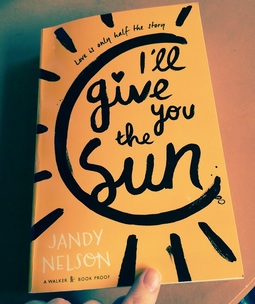 I'll Give You The Sun paperback will be released 2 April 2015 by Walker Books I'll Give You The Sun paperback will be released 2 April 2015 by Walker Books I’ll Give You The Sun is a breath-taking novel for young adults from the highly acclaimed writer Jandy Nelson. Hailed as ‘the next John Green’, it quickly becomes apparent why that's the case. Her characters have that same jump-right-off-the-page-and-into-your-heart thing going on. We become wrapped in them as we discover the truths of their minds and hearts. A hot-pot of love, betrayal, sex and secrets; this book is on fire. It tells the story of Noah and Jude, two couldn’t-be-closer twins who find their world turned upside down. The book jumps between different stages of the twin’s lives; Noah’s narrative chapters are when they’re 13 years old, Jude’s when they’re 16, with each chapter throwing a little more light on their fragile relationship. This dance between past and present keeps their story fresh and alive to the reader – just as I can’t take the tension anymore, I frantically turn the page only to be released, like a pebble in water, softly descending into yet another piece of the puzzle – from another point of view and from a different time. All the while loving them and hating them and wondering how it could all have gone so wrong. Noah practically explodes off the page in the opening chapter; the tornado of his feelings swallows you up. His shame, humility, rage and arousal are absolutely scalding. It’s this immediacy, this urgency that these characters exude, that keeps us running through the pages at a rate of knots. The seething hate that boils between them is so bitter at points you can taste it. Jude’s pain at her mothers’ preference for her brother is deep and settles in the pit of your stomach. The electricity that bounces between Noah and Brian, the new boy who lives next door, fizzes and bubbles under your skin. It takes Jude longer than Noah to pull us into her world; perfectly reflecting her more brooding character and the emotional barrier she has put up against the world. A barrier that is slowly removed by Jude's blossoming friendship with her new teacher and his beautiful, mysterious protégé. Eloquent descriptions fill the book, creating vivid images that immerse us deeper and deeper into the story. “Meeting your soul mate is like walking into a house you've been in before - you will recognize the furniture, the pictures on the wall, the books on the shelves, the contents of drawers: You could find your way around in the dark if you had to.” “He floated into the air high above the sleeping forest, his green hat spinning a few feet above his head. In his hand was the open suitcase and out of it spilled a whole sky of stars.” For me, these characters are more visceral, more believable, and more human than in anything else I’ve read. There is so much going on in this book it fills you up and makes you breathless. Noah’s character spoke to me in particular; my only gripe with this wonderful book is that I would have loved to have it finish from his point of view. That said, I love it, and I urge you to read it. This is one of those books that if you let it; will change how you see yourself and those around you. I leave you with a quote from this Jackson Browne song which kept playing in my head whilst I was reading. Perhaps Jandy had it in her mind when she wrote the book. I'm gonna find myself a girl Who can show me what laughter means And we'll fill in the missing colors In each other's paint-by-number dreams And then we'll put our dark glasses on And we'll make love until our strength is gone And when the morning light comes streaming in We'll get up and do it again - The Pretender Thank you for reading part one of my interview with Sarah - I hope you enjoyed it as much as I did! With no further ado, here's part two...  There's a Shark in the Bath was written and illustrated by Sarah There's a Shark in the Bath was written and illustrated by Sarah Sarah, what picture books do you remember from your childhood? So many! I loved traditional fairy tales ornately illustrated by Errol Le Cain. I adored the bold, flat colours of Ezra Jack Keats stories such as The Snowy Day, and seeing kids build a diorama out of a shoebox in The Trip. Did the books you read as a child influence your style as an illustrator? Of course! Maurice Sendak was a huge influence on me. I loved the soft, warm roundedness of the bread dough airplane in The Night Kitchen and the amazing kitchen nightscape. In Calvin & Hobbes, I loved the expressiveness of Calvin’s face, the huge physical movements of his tiger, Hobbes, and their sometimes surreal settings. I loved the warmth of characters and the line work in For Better or For Worse daily comics in The Seattle Times newspaper. (My mother bought Calvin & Hobbes and For Better or For Worse anthologies and I read them over and over and over again.) The sign of a good book! How much does the writer inform your illustrations - is it always a collaborative effort? In my early books, I was given a text and I worked to the text, with my editor. But there was still loads of room for me to do my own thing. Morris the Mankiest Monster, for example, didn’t really give any idea of how Morris would look or the kind of world he would live in. I made up all that. But I did run the character designs by the writer, Giles Andreae, via e-mail, and he gave me the go-ahead. (And he also got his agent to take me on. Thanks, Giles!) I only met him a couple years later, at the launch of the DFC comic (now The Phoenix Comic). With Gillian Rogerson (You Can’t Scare a Princess!), Anne Cottringer (When Titus Took the Train) and Claire Freedman (Superkid), I only met them once the books were finished.  A Fleet of Sarahs A Fleet of Sarahs What's been the greatest challenge you've faced as an illustrator? When I went into illustration, I thought it would mostly be sitting at a desk, drawing. I had no idea how much e-mailing, paperwork and publicity events would be involved. I’d say these take up at least 70% of my time and I feel like I’m working four full-time jobs. So making time to spend with my husband, my friends, doing simple things like going to the cinema, those are my greatest challenges. Yes, I remember you did a post on your blog about the other jobs you have to balance as an illustrator. So what challenges do you face as a writer? I still have a lot to learn about crafting words. Philip Reeve is a master at this, and his pages are full of unique ideas, lovely sounds, well-timed humour, and phrases that create the most vivid mental pictures. I think it’s just like drawing, I get better at it with practice and good advice. I’m lucky, I’ve surrounded myself with hugely talented people who will often give me help if I ask them. And I learn by reading my stories aloud to kids, seeing what works best. Who's been your favourite character to illustrate? It would have to be either Vern the sheep (from Vern and Lettuce, who’s based very much on my husband) or Iris the mermaid from Oliver and the Seawigs, who’s based on me. I know these characters so well and having them do things is almost like dressing up in a costume. I always know exactly how they’ll act. I love how Iris is a bit chubby, with a big backside, and still gorgeous. Quite right! What three tools can't you live without? An automatic pencil, a dip pen with ink and my lightbox! Can we see your workspace? Sure! I’m afraid it’s usually terribly messy. I work in an old police station and share the studio with Gary Northfield and Elissa Elwick.  A glorious spread from Dinosaur Police, Published by Scholastic in May this year A glorious spread from Dinosaur Police, Published by Scholastic in May this year Is there such a thing as a typical day? Not really! Events and promotion always keep me hopping. Some days I’ll be up at the crack of dawn, throwing on an over-the-top dressy outfit, and rushing off to a school, where I’ll perform on stage, talking about my books. Some days I’m working in the studio and chatting with my studio mates. Last year my job took me out of the country, to Ireland, Norway, Spain and Dubai. Wow! I hope you like to travel. Here’s a bit of a cheeky question - what's your favourite spread you've illustrated? Can we see it? I had lots of fun creating Dinoville, the world where my dinosaurs live in my upcoming picture book with Scholastic UK, Dinosaur Police. I got to invent a world for my dinosaurs. If you turn a few pages, you can look closely at the cinema listings, and there’s a film playing with a human going on the rampage in a city. What is the best thing about your job? Drawing is my favourite thing to do in my free time, so it’s awesome I get to do it for my job. I also love it when I see a kid light up over something in one of my stories or because of a story they’ve written or picture they’ve drawn. And I love my colleagues. Of all the people I’ve ever worked with, picture book people are the most kind and encouraging. Put us together in a room and we have so much fun messing about and drawing silly pictures. Sounds great! Has there been anything totally unexpected in making a career out of illustration? No one told me I’d need to become a stage performer! When we’re told to go in front of an audience of 200 6-year-olds and ‘talk about our book’ for an hour, they don’t really mean that. I had to learn very quickly how to put together a book-themed stage show. Do you have any advice to offer budding illustrators? Yes! 1. Try to learn about public speaking and performing on stage. Kids love watching us draw, so get comfortable with live drawing; get used to the idea that these drawings might not be as good as the careful drawings we make in our books, but know that the kids won’t mind. They just think it’s magic, that we can think something in our head and make it happen on paper, and make it funny, with big teeth, poos and farts. 2. Take developing your artwork seriously, but don’t take yourself too seriously. (See the poos and farts of the last point.) 3. Don’t get jealous of your colleagues. If we all big each other up and help each other, it’s a lot more fun. I’m sure anyone reading this who’s studying at Art College will be listening! Last but not least - what's in the pipeline? Several things! Dinosaur Police comes out in May, and I hope people will find it a terrific romp of a picture book. My third book with Philip Reeve, Pugs of the Frozen North, comes out with Oxford University Press in September. I’m in the middle of drawing that one right now! I’m also working on a picture book with the Vern and Lettuce characters for David Fickling Books. Philip and I are already brainstorming our fourth book together, and he’s planning to start writing that in the next month or two. I’m planning to take a bit of time off work this summer to visit an artist friend in Chicago and learn some etching skills. I’ve always wanted to do that!
I want to offer Sarah a HUGE thanks for chatting to me! I also want to thank her for shedding more light on such an important facet of publishing. Its high time we were showing our illustrators the same respect as we show our authors! If you missed it last time, you can show your support by using #picturesmeanbusiness in any related tweets and you can find out more about the campaign on Sarah's blog. You can follow her on Twitter and don't forget to check out her brilliant website! I am so thrilled to have Sarah McIntyre on Wee Red Writer! Sarah has written, co-written and illustrated lots of popular titles for children including the hugely successful Oliver and the Seawigs, which has recently been longlisted for the prestigious CILIP Carnegie Medal with her co-writer, Philip Reeve. You may already know that Sarah has been in the media spotlight of late; and you're about to find out exactly why! This interview is split into two parts in order to allow for a good meaty (and essential!) discussion about the hot topic of #picturesmeanbusiness.  Hi Sarah! Firstly, congratulations on your CILIP Carnegie Medal nomination! I applaud you (loudly!) for standing up for illustrator rights and banging the drum about the importance of illustration in children's books. Can you tell us what happened with the Carnegie Award organisers for anyone who doesn't know? *Note to readers: The CILIP (Chartered Institute for Library and Information Professionals) Carnegie Medal is an annual award recognizing an outstanding book for children and young people. The same body also awards the annual Kate Greenaway Medal for outstanding illustration in children’s books. Thanks, Julie! My experience with the Carnegie Organisers has been so encouraging. The award has built up for me as this big thing you can’t criticise, but they really do listen when we spot things we think are problematic. In this instance, Oliver and the Seawigs was included on the long list, but only credited Philip Reeve. That didn’t make sense to me; Philip and I are co-authors, we brainstormed a lot of the story together and I don’t think its text can be read separately from the illustrations. And it wasn’t necessarily a contender for the Kate Greenaway Medal either; it’s not as fully illustrated as a picture book; it’s somewhere in the middle. Supposedly the Carnegie is an award for writing and the Greenaway is an award for illustration. But I noticed that the Greenaway list still included the writers of the books, while the Carnegie list didn’t include the illustrators.  That didn’t seem fair. When I pointed this out in a blog post, the chair of the committee, Joy Court, got right back to me and said that they’d been using data provided from Nielsen BookScan (which only listed Philip as the author), and they were following an old listings template that they really just hadn’t thought about. Within 24 hours, she had the listing changed to include all the illustrators, and she and the committee are going to review some other issues that this raises. (I really hope they create a third award for these so-called ‘middle grade’ books that are often halfway between picture books and text-only novels. They’re not always the most popular books with adults, but they’re absolutely essential in the transition between reading picture books and YA novels.) That’s brilliant! Your efforts have sparked a reform in how we perceive illustrated books (and the role of the illustrator!) So, is co-authorship becoming more prevalent? In my last blog interview with Vivian French (another patron of illustration) we were discussing how much sense it makes for writers and illustrators to collaborate on a book, something she tries to do with all her books. Is it something that publishers need to review, rather than writers and illustrators? I think books have been co-authored for a long time, in the sense that the words and pictures tell different parts of the story and come together to make something different than words and pictures alone could do. Illustrators have always been ‘authors’ in the sense that their pictures work to tell the story, not just echo the text. But in the old days, illustrators often were given a finished text and they created almost stand-alone paintings, sometimes even on a special plate that was pasted into the book. Now printing has developed so that it’s much easier to intertwine words and text. They can work much more closely, and one can set up the joke and the other can provide the punch line. (Those are words from Alex T. Smith; we were just chatting about this subject on Twitter.) Ah yes! Alex spoke about this when I interviewed him. So how does that work for co-authors? What’s your experience? I think perhaps it’s getting more common for writers and illustrators to work together and create something before they present it to a publisher together. With my early picture books, I never even met the writer until after the book was published. But it’s much more fun working with a friend. David O’Connell and I started our book Jampires as a Comics Jam, taking turns drawing and writing each page without telling the other person what would happen, like a game of Consequences. It was the best kind of play, and I loved the story that came out of it. Our picture book was only loosely based on that original Comics Jam story, but that was where we built up our ideas. With Philip Reeve, we had such fun joking around with characters for Oliver and the Seawigs. Cakes in Space was his idea, but his first draft of the story was much more serious, and when we got it back from the editor, I proposed the idea of the food machine and killer cakes, and Philip flew with it.  An enduring tale indeed - the book is recognised around the world for Helen Oxenbury's stunning illustrations and Michael Rosen's enchanting rhythm. An enduring tale indeed - the book is recognised around the world for Helen Oxenbury's stunning illustrations and Michael Rosen's enchanting rhythm. You recently posted on your blog about how illustrators are severely overlooked when it comes to Nielsen BookScan Data (used by several organisations as the main data reserve for book details) which list books by author alone. Is this going to be changed? I hope so! My agent Jodie Hodges, and Charlotte Eyre at The Bookseller, are still looking into it. We want to make sure we have all the facts straight before we discuss it with Nielsen. That’s been the problem, hardly any illustrators have any idea how Nielsen works, and most have never even heard of the company. I don’t know very much, but I started to get an inkling something was wrong when Joy Court mentioned the data used for the Carnegie listing, which only included the writer’s name, not the illustrator’s. And then The Bookseller ran an article about the enduring success of the picture book, Going on a Bear Hunt, but only featured Michael Rosen (the writer) and didn’t even mention Helen Oxenbury (the illustrator) which seemed nuts (and I knew Michael wouldn’t approve); it’s a highly illustrated book based on a classic campfire tale, and Helen is an illustration legend. That’s when the penny dropped for me, and I realized just WHY illustrators keep getting left out, even when award panels and journalists should know better; it’s because of faulty data. Nielsen BookScan is where everyone gets the data about books, and can look up how well the books are selling. You can do a search for a writer, and all their books will come up, so you can get an overall sense of their career and economic value. But you can’t search by illustrator. If you type in my name, only two books come up: Vern and Lettuce and There’s a Shark in the Bath, both of which I wrote as well as illustrated. Jampires doesn’t even come up, because you’d have to search for me and David O’Connell together. It means there’s no easy way to gauge an illustrator’s economic value. If business people and the media can’t easily look up our sales figures, they assume we have no sales value - which is wrong, everyone knows pictures are a big part of what sells picture books. And when lists are made, such as the PLR (Public Lending Rights) lists of top-borrowed authors from libraries, again, illustrators get left out. From what I gather, on Nielsen BookData there seem to be two tiers of information, and Nielsen only requires publishers to include the ‘author’ of a book in the first tier, and adding the names of illustrators and translators in the second tier is optional. Some publishers (or more likely their interns) don’t bother including those names. And when Amazon picks up on that faulty data, illustrators have to fill out the ‘form of shame’ to get their names included with their books, and this can take months to process. So we need a two-part solution: publishers really need to be more vigilant when they plug in book information, and Nielsen needs to overhaul a clunky, outdated system. Perhaps a few systems need an overhaul. I recently questioned the Red House Children’s Book Awards, who only listed writer names and left out illustrators such as Oliver Jeffers, Sarah Horne and David Tazzyman. They got their data from The Book People, and when I asked on Twitter, the rep for The Book People said that they collected their own data (not using Nielsen’s), but they were leaving out the illustrators because the computer only lets them type in a limited number of characters. Something as simple and clunky as that! So even co-writers were getting left out because their names didn’t fit. Since then they have added Oliver Jeffers to the list, but others are still missing. You can read more about this on my blog.  Sarah's clever hashtag allows writers and illustrators to show their support for illustrator recognition on Social Media Sarah's clever hashtag allows writers and illustrators to show their support for illustrator recognition on Social Media I started a hashtag on Twitter - #PicturesMeanBusiness – to try to increase awareness about giving credit to illustrators when people post book covers and illustrations. If people can mention the illustrator, the publicity all adds up and helps us to make a living from our jobs more easily. Sometimes people will share book covers they like and not necessarily know the illustrator or the designer, but at least the writer and publicist should know this information and share it, particularly when they first reveal the cover. By ‘recognition’, we’re not asking for pats on the back. But bookselling is so connected these days to celebrity culture that TV celebs such as David Walliams have a big head-start on sales. If parents, teachers, reviewers etc can also big up illustrators and writers who aren’t on telly, it says something healthy to our kids: ‘Work hard at learning to draw and write, get good at it; you don’t have to have a good face for telly to make a living at this.‘ But right now, this isn’t necessarily the case, and kids aren’t stupid; they can see that. I agree totally! Coming from a children's bookseller: children read pictures before they read words. The illustrations inspire so much imagination and are vital to the child’s understanding of the words – why are we so keen to throw them out of children's books so early on? Does your experience of this differ in different countries? Yes, Brits are traditionally averse to pictures and remarkably visually illiterate. Many people have a really hard time explaining what is going on in a picture, and how a picture works. I think these people feel that having pictures in a book lets the imagination be lazy, and they think that an adult should always conjure up mental images from text alone. My issue with this belief is that it limits adults’ mental vocabulary of images. Even if a book is descriptive, the images we conjure in our heads are usually based on things we’ve seen before, whether they come from life, films or adverts. Why pull all our images from outside books? Quality book illustrations can expand the way we imagine something and put images into our heads that never would have been there, completely new ways of seeing things. Pictures help us imagine better, but they don’t work like films, in showing us almost everything that is taking place; we still have to imagine what happens between each picture. Exactly! Vivian French said the same thing – ‘you don’t get anything out of your imagination, until you put something in to your imagination!’ You’re not alone. What about outside the UK? Americans are a little bit more open to pictures in books, and I think they’ve been publishing picture books for slightly older children (say, ages 8-12) for much longer than we have here. They’re also more proud of their picture book illustrators and celebrate them more. The French and Japanese never graduate from books with pictures; they see it as just another media, like distinguishing between film, photography, theatre and radio. French and Japanese readers will happily switch between text-only novels and comic books. Things are changing in Britain, but people still hold on to a certain snobbishness about picture books and comics, which is why the more literary-sounding term ‘graphic novel’ was invented. People who make graphic novels usually just call them ‘comics’. But the highbrow term keeps reviewers happy. It’s our dirty little secret, liking pictures in our books! I never grew out of reading picture books (despite my teachers telling me I was too old for them) but in school I greatly missed them when we moved on to older reader books – do you think it's limiting to have illustrations removed from books so early on?  Sarah and Philip's middle grade book has illustrations on every page to enhance the text. Sarah and Philip's middle grade book has illustrations on every page to enhance the text. Yes, I think it’s unfair to demand children go from beautiful illustrated pages straight to scary pages of solid text. When Philip and I made Oliver and the Seawigs, we tested it out on his son, who was ten years old at the time. It was fascinating to watch how he kept reading until he came to the first page without pictures, and then he put down the book. We resolved to have at least one small picture on each page of the first chapter, so a reader could at least get through the first chapter and feel a sense of accomplishment. The Horrible Histories books do this well; they have a picture on every page. And comics do this even better. There’s so much talk about getting boys to read and ‘reluctant readers’, but no one can doubt the success of illustrated books such as the Claude books, Diary of a Wimpy Kid, or Tom Gates books. I’m surprised anyone’s still trying to wean kids off books without pictures. We want kids to read, so let them read things they enjoy, and build a lifelong love of curling up with a book. The other thing I’ve noticed is that kids who might hate the idea of writing a story absolutely love making comics; they grab their pencil and get straight to work. Comics are brilliant for helping kids develop writing and drawing skills; it one skill is a little weak, the other can compensate and pull the other skill forward. I noticed that in making comics with kids who could speak almost no English, they could still tell stories in pictures. And then they’d want to add a few words, just to make the picture story work better, so they might learn how to write some sound effects. Drawing pictures is the best way to get ideas for writing. You can design a character and it’s natural to make that character meet another character and start doing something and talking. Kids are much happier seeking out words when they’re in the middle of a story that needs them. Yes it’s surprising really, when you look at Publishers who provide for dyslexic readers – the books are illustrated to a later age – because it helps the reader! On that note, we'll conclude Part 1 of our interview. Thank you for giving us so much food for thought about the importance of illustration and fair representation for illustrators! If you want to show your support you can use #picturesmeanbusiness on Twitter and you can find out more about the campaign on Sarah's blog. You can follow her on Twitter and don't forget to check out her brilliant website! Part 2 will be up very shortly for an insight into Sarah's life as an illustrator! Best-selling children's author, Vivian French, has written more than 200 books (including the hugely popular Tales from the Five Kingdoms series) and her illustrious career spans 25 years! Vivian regularly tours around schools and festivals, wowing kids all over the country. She also teaches at the Edinburgh College of Art (ECA) where she passionately champions the importance of illustration in children's books. She joined me for tea, cake and seriously good chat! 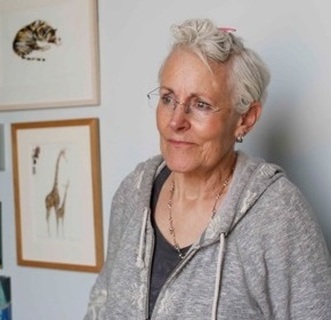 Hello! Thank you so much for joining me on the Wee Red Writer Book Blog. You're very welcome, thank you for having me! I'm going to jump right on in with my first question! What is your desert island book? I Shall Wear Midnight by Terry Pratchett has to be it, it’s the fourth in a series actually, but I don’t think you have to have read the others to appreciate it. I really love it because Terry is so good about having really strong women! In particular strong older women who are very knowledgeable and wise. It's so funny as well, he just makes me crack up! My other desert island book is the princess bride. It’s just fantastic. I've only seen the film! Oops... Well you know the film was brilliant – William Golding (the author) did the screenplay for it, so it’s a dead ringer for the book - but the book has even more going on. It's on the reading pile! So Vivian, I would really love to know where you get your inspiration from, apart from the wonderful Mr. Pratchett of course! Oh! I always get very grumpy when people ask me about where I get my inspiration from! I always think it’s a bit like being a caterpillar – you munch up all sorts of things and they kind of come out, hopefully not as nasty little squirmy grubs! I was lucky – my Dad read to me since I was absolutely tiny and we lived in a house so full of books. We went to the library every Friday and got more books, and he read to us. I used to listen to Children’s Hour and the stories were absolutely fabulous – I love being read stories. The stories my Dad read me were fairy stories like Andrew Lang's Fairy books, and all of those sorts, and I absolutely loved them. I think particularly with something like the Five Kingdoms they really inform what I do. It makes sense to me that you feel your childhood was so important in influencing the career you have now - I know that the books I read up until about 12 left the biggest impression on me, and you see that running through the books I love to read now, as an adult. Yes, they are so important! You see it with illustrators too, if you talk to an illustrator about the books they loved when they were little you can see where their style comes from – just look at Nick Sharratt’s list of books he read up until he was about that age. If you put them all together and mix them with art college training, he is what you get! Absolutely! Do you find that the little details from everyday life with your family end up in your stories? Ohh yes! I’m always saying to kids to watch what’s going on around them, to which they respond ‘oh but I have to use my imagination’… Well I think using your imagination is like wearing an invisible bucket on your head and you'll never be able to get anything out of your imagination until you put something in to it, and all that observing and listening is fuel for that.
It’s the interaction that’s so much fun isn’t it? You can get just a little morsel from one of the kids that before you know it has bloomed into something magical for the whole group. Yes exactly! So Viv, you teach at the ECA and you’re incredibly passionate about illustration. It seems to be the norm that most writers never even meet the illustrators of the books they've written, but I know you work closely with a lot of the illustrators for your books –what’s your take on writer/illustrator relationships? Should that be changing in publishing? I’ve been writing books for 25 years and I asked to meet the illustrator of my first book – not in any way, shape or form to say, ‘I think the character should look like this’ but in fact to say ‘What do you think and how can I change the character to suit your illustration?’ I think the relationship varies so much from author to author and illustrator to illustrator and yes sometimes writers never meet their illustrators. I think some of them just aren’t bothered. I love it because I just love that interaction. I've got a book coming out in the summer with Angela Barrett for which I wrote the text and in it there’s a bit where the princess is brought a lot of gifts, and Angela just drew what she wanted to draw, and I then went back and changed the text to fit with her illustration. I love that, because it means she’s really invested in that book and that story, and it’s just as much hers as it is mine. It’s absolutely brilliant.  Ross Collins' illustration of Gubble is exactly how Vivian pictured him. Ross Collins' illustration of Gubble is exactly how Vivian pictured him. It sounds like fun! I watched a wonderful interview of you with Ross Collins, who illustrated the Tales from the Five Kingdoms series, and when you were talking about the character Gubble, it seemed as if Ross has almost picked him right out of your head. How much influence did you have over how he would look? Because of the acting background in the theatre, when I imagine my characters I always know how the talk and how they move, and how they look. I was so lucky with Ross – he and I get on so well, and I think he has the same sort of mind-set. So when he illustrates a character I recognise them, it’s just absolutely spot on. That happens quite a lot, and I've worked with a lot of illustrators over the years. In fact I think there’s only two I haven’t met!
It’s fascinating that one can inform the other in that way. Talking about the writer/illustrator relationship – it’s been very much a focus for media attention in the last few months, fuelled by the illustrator Sarah McIntyre raising the question of co-author recognition between writers and illustrators in the case of the Carnegie Award. Is this heralding a change? Is co-author recognition the future? Yes, I’ve been waving the illustrator flag for years! At ECA we actually categorise our books by the illustrator. I had a major campaign last year because public Lending Right list the most borrowed authors, for instance Julia Donaldson would be number two or three, Axel Scheffler however will be listed somewhere around 200. I think that’s totally appalling – they’re just as much his books as hers. The Society of Authors took it up and I’m hoping that this year will see the recognition of a book by an illustrator. There are still some authors that talk about ‘my illustrator’ and that’s just not the case – it’s the illustrator of the book. I get quite cross about people who do that. That’s why you’re such a brilliant patron! So what are your top three pointers for illustrators about to embark on their careers? Character! You have to establish a character we can relate to – whether it’s a nasty little thing we simply hate, or something we love – it has to have an identity, an individual identity. It has to have some kind of feeling – all books are about feeling. Also, it's important to think simply. It’s almost like writing a joke – it can be that simple. Even if it has a serious meaning behind it. I love Ed Vere’s book ‘Banana’ where ‘Banana’ is pretty much the only word used to tell the story, right until the end, where we hear ‘please’, and it’s just brilliant! It’s so simple but it says so much. It teaches about caring and sharing, but in no way shape or form is it moral. That’s something students sometimes sink into, they say ‘Oh but I want to tell children that’s it’s better to be kind’ and that’s a killer. No one wants to be told that they need to be kind, ever. It’s enough to make kids want to go straight out the window! So nailing character, feeling and simplicity are key for budding illustrators. What if an illustrator wants to write and illustrate but they don’t have the confidence as a writer? At ECA they are encouraged very much to illustrate their own writing. In the first year students look at storytelling in all kinds of different forms. Some of them will never really want to write but others are really very good. I’ve had illustration students who have left illustration to become writers, having discovered it through illustrating stories. Did Catherine Rayner find her voice through illustration? Oh Catherine was outstanding right from the beginning, she always had a very clear understanding of how a story works. Philip Reeve is another writer who also illustrates very well, though he focuses on the writing side of things. It’s all telling stories isn’t it? Yes! I got a doodle in my ‘Oliver and the Seawigs’ book along with a doodle from Sarah McIntyre who co-wrote and illustrated it! They were just fabulous. So, moving on from illustration! What is your favourite book to read aloud? I love the Just So Stories by Rudyard Kipling, because the voices are so brilliant. I liked the Beginning of the Armadillos best, 'Can't curl, can swim-- Slow and Solid, that's him! Curls up, can't swim-- Stickly-Prickly, that’s him!’ I love that. Ah the actress! You’re so good at doing voices. So here’s a wee cheeky question – can you tell us who your favourite character is from your own books? Oh! That’s a tricky one. I think I do have a favourite. Queen Bluebell, who is the queen of Wadingburn in the Five Kingdoms series. I suspect… or have a nasty suspicion that I am turning into her! She’s a kind of combination of a lot of my aunts' and my grandmother. I love Bluebell, she has a lot of adventures, and she’s not afraid to go out in the hunt for more. Now there’s a character will could all do with a little bit of! I know you’ve just spent a week in Birmingham doing events with lots of lovely kids so I might know the answer to this next question! But – what is the absolute best part of your job? Yes, it is talking to the children. When you get a child talking about a story that you’ve invented and their eyes are just shining – what a privilege! To be able to share that with them. I do like standing on the stage too – that’s the actor in me! What’s the worst part? Oh, when it goes wrong. I always say to kids you have to plan, plan, and plan your stories! And I do plan, and somehow I end up going off that plan and I can't, honestly, truly, with my hand on my heart, I can't see how to resolve it. And then I’m panicking and thinking oh my god! I have had a few sleepless nights over plots not going right. Is that down to an over-active imagination as opposed to the ideas aren’t coming, or writer’s block? Yes – there’s so many possibilities! And you have to be able to cleverly solve every problem. I don’t get writers block – my mortgage sees to that! So do you find yourself thinking ahead down every avenue before you settle? Yes! I have this analogy – it’s a bit like raspberry ripple ice-cream. When I’m chasing an idea it’s like chasing the raspberry swirl. You land on it and chase it and then uh-oh! You’ve reached a dead-end. Or I think I’ve solved something and then I realise I haven’t. I hope any budding writers take heart! I think people can be so hard on themselves to be perfect. Yes – and you never get there. Someone said to me ‘Oh you’ve been doing this for 25 years it must be so easy now!’ and it’s not! If anything it’s harder. I have these in-built voices of my editors in my head now – ‘Have you followed that through Viv?’ and I cry ‘No!’ I’ve been very lucky to work with some phenomenal editors, and because of that I self-edit dreadfully, because I keep re-writing it to get it right! Are you working more closely with editors now than you were in the beginning? It’s about the same. It’s perhaps more collaborative now. Working with an editor is a bit like getting married – you have to respect them. So you don’t get writers block. Do you know anyone who does? Can you offer any advice to writers who are struggling to find their story? Martin Waddell who wrote the glorious ‘Can’t You Sleep Little Bear?’ had a spell of writers block, and I think all you can do is just get a little bit of distance from it. My Dad told me that Homer said whenever he wrote something he would put it away for 5 years! It makes sense – if I pick up a book now I wrote 5 years ago I see a lot I could have written differently. Good advice. What’s your physical process for writing? I know you sometimes write on your iPad when travelling around the country – is that when you’re most productive? It depends on the weather! Where I write at home is quite cold, so it’s fine when the weather is nice, but if it isn’t I move into the sitting room where I crouch over the fire like an old biddy! I love writing on my iPad on trains. I’m thinking of applying to be writer in residence on East Coast trains or something! I would get so much work done! I think you're on to something there. Are there any other places you go to write, or that inspire your writing? I love visiting the National Museum of Scotland. There’s just so much to see. It’s a great place for head-space isn’t it? Absolutely! I have been so many times and I always see new things I haven’t spotted before. I love the macabre things and the Egyptians. There’s a wonderful Viking skeleton in the basement of a young man, and they found the bones of a much older woman buried with him, but she was buried much later on. I always wonder who she was – his wife? His girlfriend? Maybe she loved him and he never knew!  Well it’s clearly an inspiring place for a writer! Talking about new ideas – anything exciting coming up you can share with us? You mentioned your book with Angela Barrett… Yes! It’s out on June 4th and its called The Most Wonderful Thing and the illustrations are absolutely fabulous! And the design is brilliant too, which was done by Elizabeth Wood at Walker Books. I also have the first in a series of six out in April, called Dragons Can’t Swim – Sam J Butterbiggins, Knight in Training which is illustrated by the very talented David Melling! How exciting! A huge big thanks to Vivian for taking time out of her packed schedule to chat to me. You can find out more about Vivian on her website and follow her on Twitter! My next interview will be with a wonderful writer and illustrator who’s been causing a bit of a stir! Keep your eyes peeled...  As flurries of snow whirled past my window I felt inspired to review this brilliant book by the talented duo, Richard Curtis (think Vicar of Dibley) and Rebecca Cobb. They have two books together now (The Empty Stocking is another fab picture book) and I can't wait to see what they come up with next! Snow Day takes a look into that most complicated of relationships - that of the teacher and their pupil. Often difficult territory! Richard's charming characters, Danny and Mr Trapper, brilliantly demonstrate the familiar obstacles faced by all of us at some point in our school careers, be it as pupils or teachers. The opening pages of this book are nothing short of magic, transporting it's readers into the story from the first page turn. This is largely thanks to Rebecca's talent as she weaves a spell with her paintbrush over the pages. Rebecca captures that wondrous silence that only those huge swirling flakes can bring - Raymond Briggs would be proud! There's no doubt that it is indeed a proper Snow Day (you know, the kind where there's just no point in even trying to leave the house). Kids won't blink at the mention of emails, mobile phones and Facebook alerting the world to the arrival of the Snow Day and it's good to see this relevant information creeping in to children's stories - it makes it all the more real for the wee ones. (I can almost feel the eyes rolling.) As is the nature of a typical Snow Day, everyone decides to stay at home for the day. Everyone but Danny and Mr Trapper, that is. Poor Danny has a whole day of misery to look forward to - Mr Trapper is his worst enemy! He just can't seem to get it right and he manages to annoy Mr Trapper at every turn. Just when we think all is lost, and that this will be the worst day in the history of school... the snow begins to work its magic on the pair. Against the odds it seems that Danny and his nemesis share some common ground and it's delightful to see their friendship grow as they begin to understand one another. Rebecca's illustrations capture their joy and energy as they get up to all sorts of adventures in the snow, awakening that inner child in us all, who is desperate to clamber into the pages and start grabbing handfuls of freezing, wet snow. Kids will love looking through the illustrations for all the little extra details that I have come to expect from this marvellous artist (and indeed my story time group delighted in pointing them all out to me!)
It turns out the Snow Day is the best day Danny and Mr Trapper have ever had. But will their new found friendship survive the thaw? In this wintry tale Richard Curtis teaches us that life can throw surprises at us from unexpected places and that there's always more beneath the surface if you only take the time to look. Little readers will be waiting for the next adventure with eager anticipation!  Cover Cover From the very first ‘ew!’ (“weeing on lamp-posts and drinking out of the toilet”) the kids I read this to were utterly hooked. We feel passionately for the little pug Biff, who so badly wants to be a ballerina. But “dogs don’t do ballet!” as several of the characters remind us from the start. But! Triumph in the face of adversity. The author skilfully leads us on a journey of self-belief, and acceptance. The little girl who owns Biff tries to get her Dad to let Biff go to the ballet, but he won’t have it, after all… “Dogs don’t do ballet!” However Sarah Ogilvie’s brilliantly characterised illustrations show Biff cleverly sneaking around after his owner, eyeing up her tutu, watching her ballet class… only to be told, time and again, that dogs don’t do ballet. Sarah achieves that holy grail of illustration – giving us something we don’t find in the words. Making us use our eyes to see what’s really going on (Biff is one sneaky doggy!) Hearts will break over the pictures of little Biff - howling at the moon from his kennel, little ears dropping, sad brown eyes sparkling - as he is constantly being told he isn’t supposed to do ballet. Surely he is going to give up on his life-long dream? But Biff has another idea. Being one determined pooch, he sneaks along to the ballet. All is going well in the show when, suddenly, disaster strikes and the ballerina crashes to the floor. But the show must go on… is this Biff’s moment?
This brilliant debut book from Anna Kemp teaches children to accept others and themselves as they are. It’s fun, charming and thoughtful and the vibrant illustrations by Sarah Ogilvie give the characters bundles of energy and life. Sure to become a household favourite to all who read it! |
More posts coming soon...
Archives
July 2016
Categories |


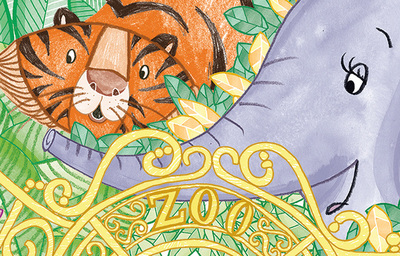
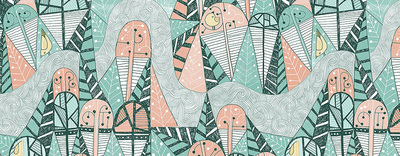




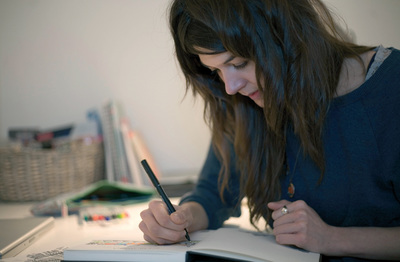


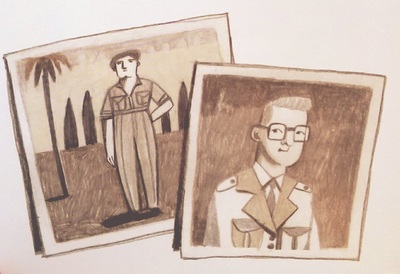




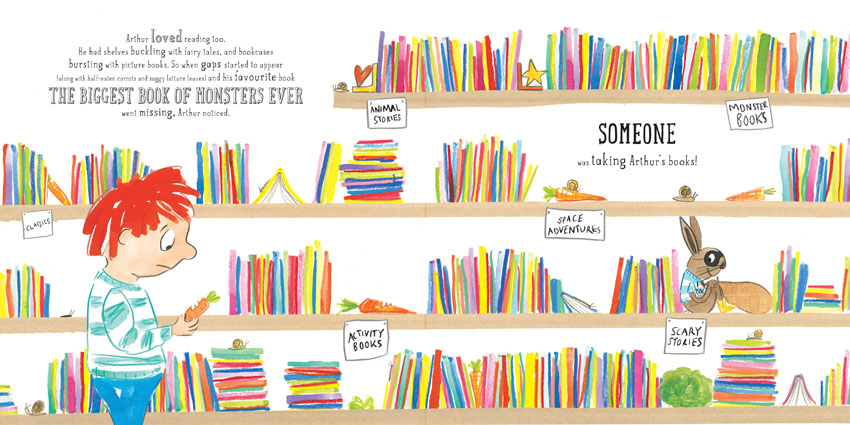





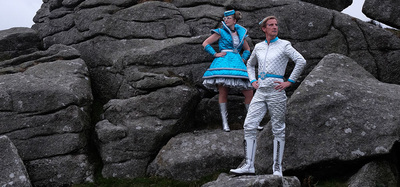

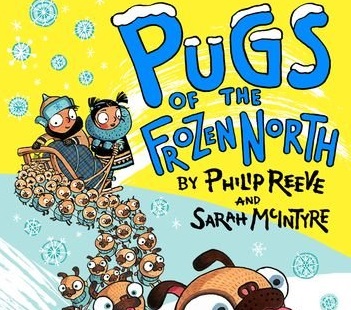
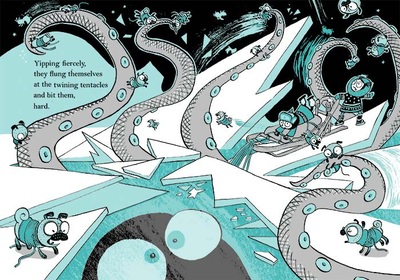

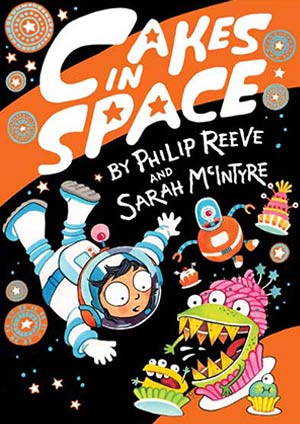

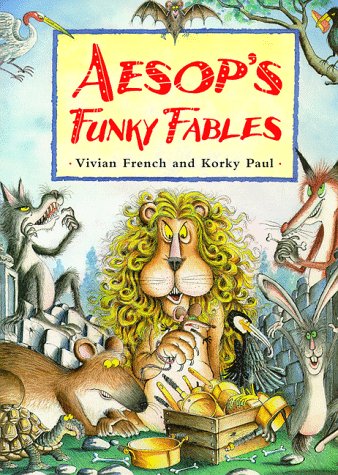


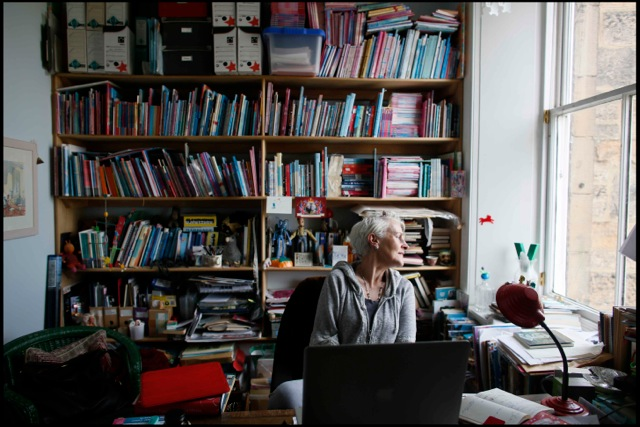




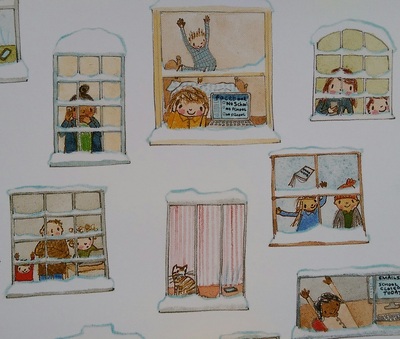




 RSS Feed
RSS Feed